Trainfinder London: Visiting every London airport by train in a single day

6 airports in 9 hours for £139.90. Which airport train comes out on top?
Throughout 2018, Angus Kidman is undertaking the Trainfinder challenge, visiting every city in Australia and New Zealand with a suburban rail network and travelling across the length of every line in a single day. Learn about why he's doing it and what's involved.
For a train-and-aviation freak like me, London is the holy grail. It has six airports, and all of them are accessible by train. So I couldn't resist a bonus overseas Trainfinder round, seeing if I could visit all of them in a single day. Yes, it was fun. No, it isn't sane. And yes, it was hugely expensive. Here's what went down on the rails to the skies, and how the travel options compare.
How much train travel are we talking here?
London's six key passenger airports can be handily sorted into three groups:
- Heathrow to the north-west and Gatwick to the south, the big ones that everyone's heard of and which handle long-haul international flights, as well as European and domestic destinations. If you fly to London from Australia, you'll most likely arrive at Heathrow.
- Luton in the north and Stansted to the north-east, airports dominated by low-cost carriers like Ryanair and easyJet and mostly servicing Europe.
- London City Airport in the inner east and Southend in the south-east, the ones which everyone often forgets. London City's central location means it's popular with business travellers (reflected in its fares). Southend is a comparatively small but very pleasant airport which I've written about at length before.
All of these are well served by rail. Indeed, Heathrow has three distinct options: the high-priced but super-fast Heathrow Express; the slightly cheaper and slower TFL Rail; and the regular London Underground. Gatwick and Stansted also offer express services, while for Luton, London City and Southend, the airport's just a stop on a regular route.
For my other Trainfinder experiments, I've scheduled out the entire day's travel in advance. That wasn't an option this time for two reasons. Firstly, the Underground doesn't operate to a timetable, but runs as a "turn-up-and-go" service. That makes it hard to predict exactly when I'd reach various stations.
Secondly, the Thameslink line, which I'll be using for two of my journeys, has only just adopted a new timetable, which has so far proved to be (bluntly) something of a disaster, with regular cancellations and much passenger angst. So while I planned out the order in which I'd take the trains, just how long it would take was something of an open question.
While I was travelling with just one insanely small carry-on bag, I've also noted for each service what options are available for passengers with bigger suitcases, and discussed the cost. Let's get going!
SOUTHEND
Southend Airport-Stratford 5:04am-5:49am, cost £14.10
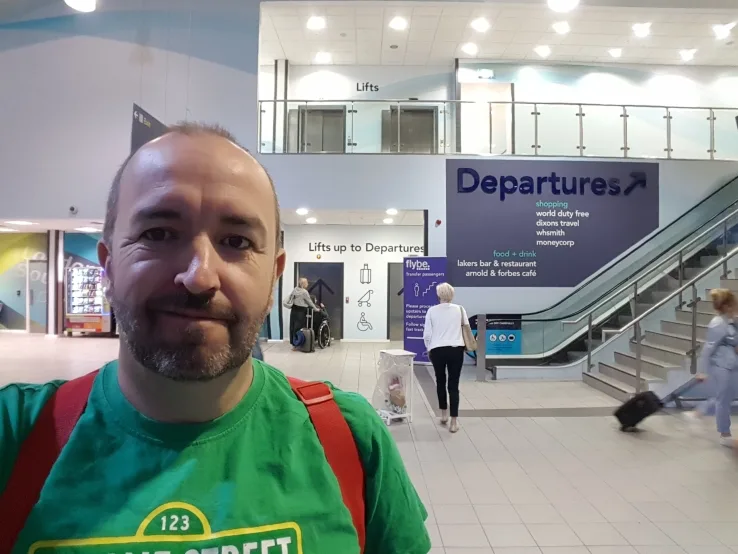
I was sufficiently paranoid about the possibility of cancellations to decide I'd start my day at one of the airports. That also meant I could (in theory) minimise the number of crowded rush-hour trains I was on. So after a night in a handy airport hotel, my morning begins by catching the c2c service which starts at Southend Victoria and ends at London Liverpool St. This is the only train where I can be 100% certain about what time I'll be catching it.
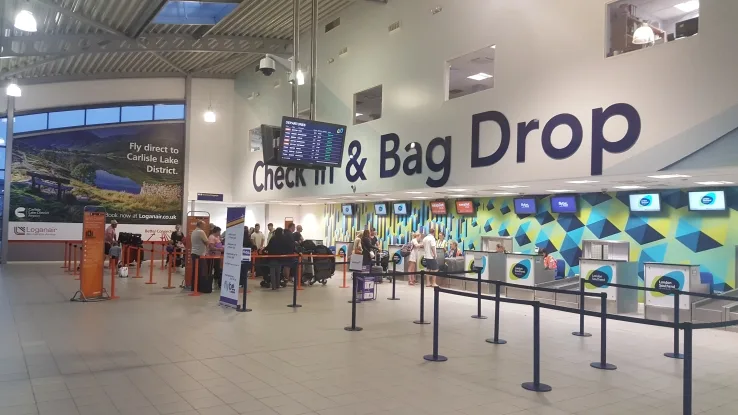
Despite the early hour, it's already light. Unsurprisingly, I'm the only passenger boarding in this direction, as no flights arrive first thing. However, the airport itself is already reasonably busy, at least by Southend standards. Everything looks clean and modern and there's a distinct lack of stress.
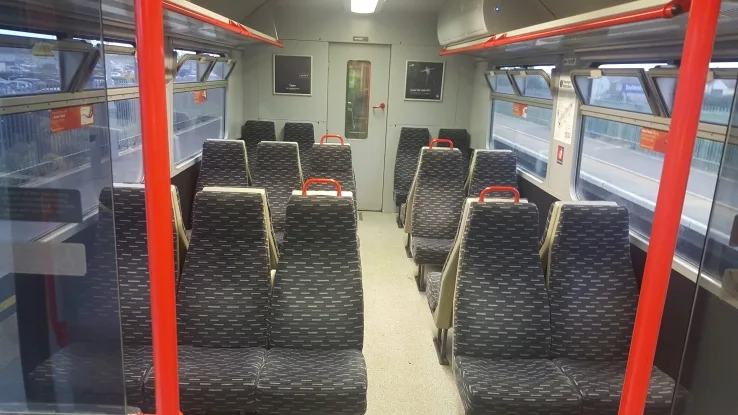
The train fills up steadily as we approach the city (yep, some commuters do start before 6am), but not to the point where it's crowded or anyone is forced to stand. A bigger annoyance is that the heaters are on, despite the fact the temperature is already hovering around 15 degrees.
Provision for luggage: There are overhead racks, but not much in the way of areas for bigger suitcases. I'd advise against using this line in rush hour if you're heavily laden.
Value for money: The fare would be marginally cheaper if I wasn't travelling in peak hour, but I can live with £14.10 for a close-to-50-minute journey. As it's a commuter line, there's no price advantage from booking early.
LONDON CITY
Stratford-London City Airport 5:59am-6:13am, cost £1.50
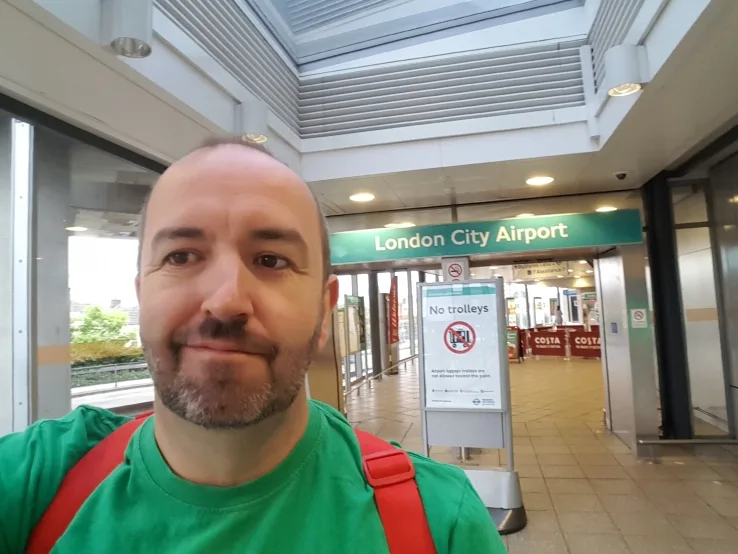
Stratford to London City Airport is a two-stage journey. While I could take the Docklands Light Railway (DLR) direct to the airport, it's quicker to jump on the Jubilee Line for two stops, then change onto the DLR at Canning Town.
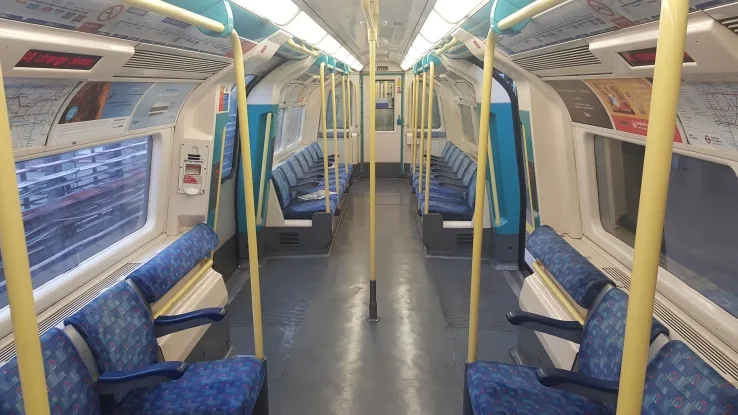
There's another advantage here: the Jubilee starts at Stratford, so I'm guaranteed to get a seat. London trains fill quickly though. One stop down the line at West Ham, and we're already standing room only. At Canning Town, it's a quick trip up the escalator and onto the London City Airport DLR.
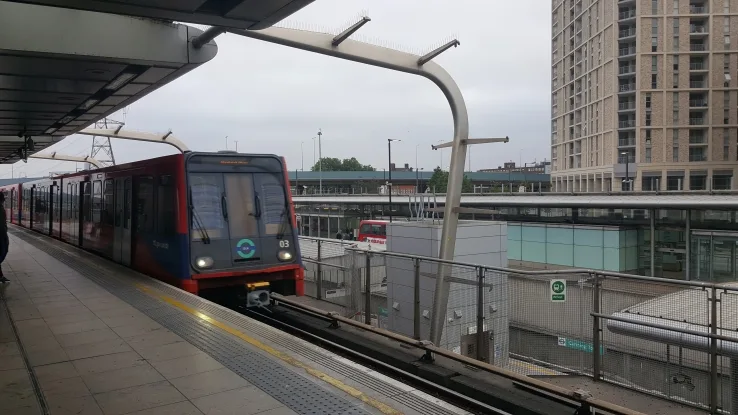
The DLR (much of which runs on reclaimed industrial rail lines) has a unique selling point: there's no driver, with everything being computer controlled. That's been the case since the line launched in 1987, which might give driverless car opponents something to think about. I'm going against the tide at this time of the morning, and it turns out many of my fellow passengers are also heading to London City Airport.
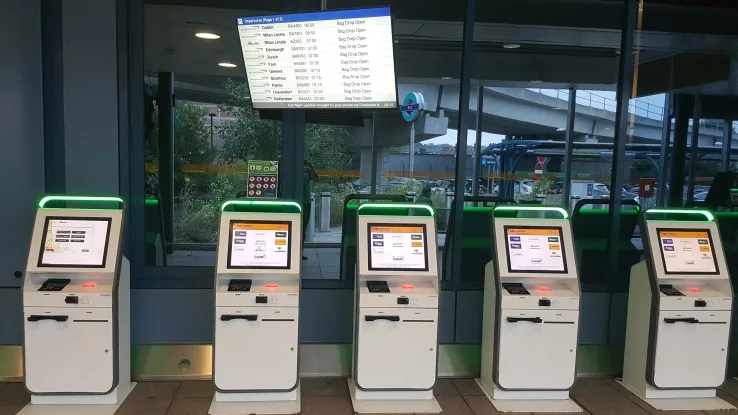
London City itself is very compact, with just one entrance hall and a handful of check-in desks. Most passengers use the kiosks lining the corridor between the station and the airport itself. Despite the lack of any airport lounges, it's the most convenient option for me to travel out of London. But not today. A quick selfie and I'm heading back to the train.
Provision for luggage: There's some space for luggage on the Jubilee, but you might struggle to get on with a big case during rush hour. On the DLR you've only got the option of standing in the vestibules, but it looks like most travellers just have a carry-on bag.
Value for money: At £1.50, this is easily the cheapest journey I'll make all day. I'm travelling just outside peak hour, when the fare would rise to (gasp) £1.70. From Central London, the fare would be £3.30 in peak hours.
LUTON
London City Airport-Stratford International 6:22am-6:36am, cost £1.50
Stratford International-St Pancras 6:44am-6:51am, cost £5.60
St Pancras-Luton Airport Parkway 7:06am-7:33am, cost £16.90
Luton Airport Parkway-Luton Airport 7:39am-7:45am
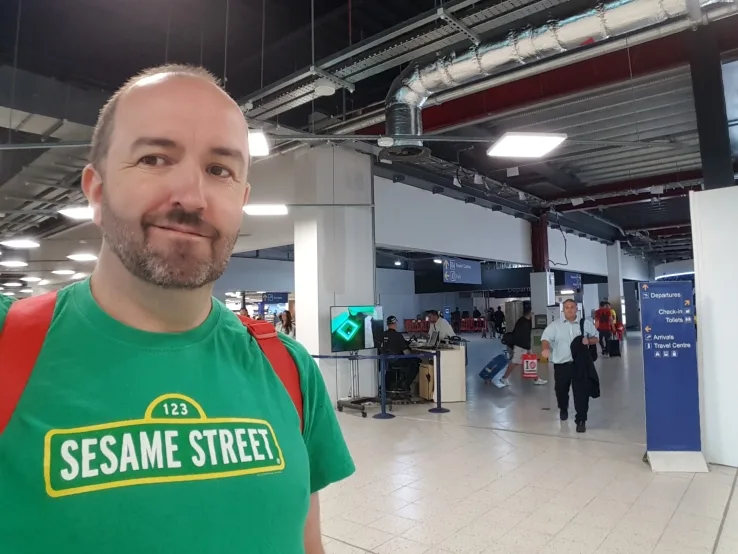
Getting from London City to Luton is my most complicated journey of the day, though not, as it turns out, the most expensive. Firstly, I jump back on the DLR, and take it all the way to the end of the line at Stratford International (a separate station to Stratford, fact fans). That's another £1.50 out of the kitty.
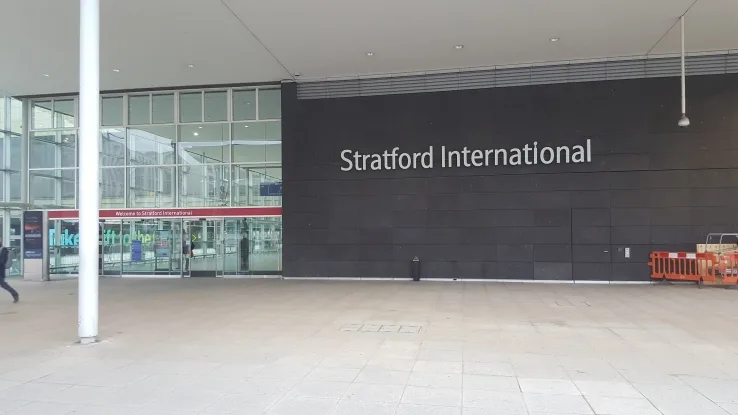
Then I switch onto a "Javelin" service, which takes me direct from Stratford International to St Pancras. This runs on the High Speed 1 line, and was used during the London Olympics to provide quick connections from the city to Stratford, where the main Olympic Park was located. These days, it serves commuters from the south-east (my train came from Dover Priory).
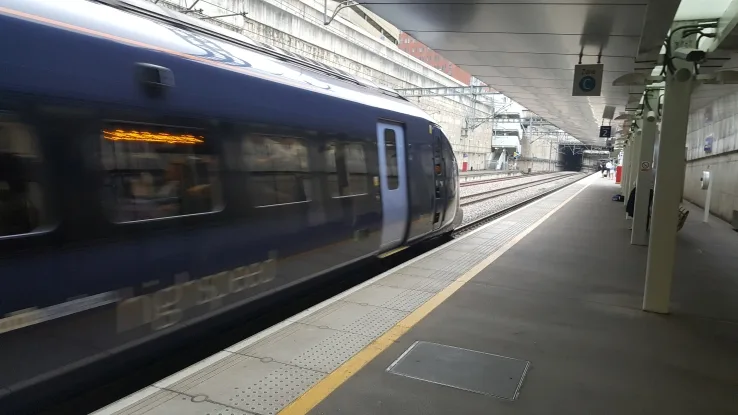
It would be cheaper to take the Underground from Stratford to St Pancras, but considerably slower and (by this stage in the morning) much more crowded. There's a price penalty: I pay £5.40 rather than £2.90 (which would have also covered my LCA-Stratford link), but I'm willing to make the trade, especially given that St Pancras is where the quite-probably-screwed Thameslink service starts.
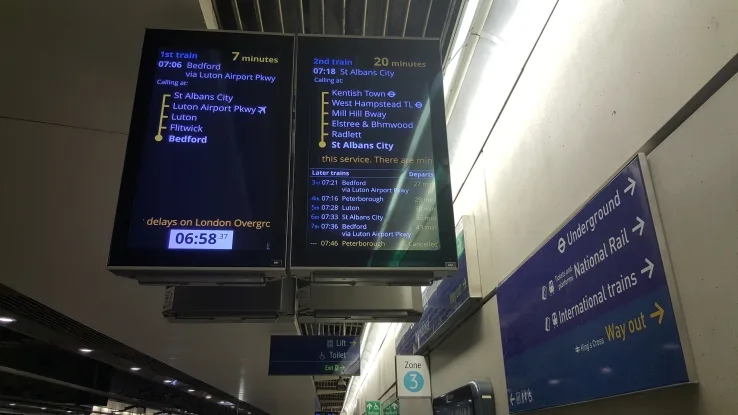
At first, though, there's no sign of trouble. At St Pancras, I switch onto Thameslink for the train to Luton Airport Parkway. It's a fast journey and leaves on time, taking under half an hour and with relatively few passengers (again, it's going against the commuter tide). But once I arrive, I then have to switch onto a bus service to get to Luton Airport itself. When I last took this trip around a decade ago, the bus was free. Now you have to pay, though in this direction that's already been added to the price of my train ticket.
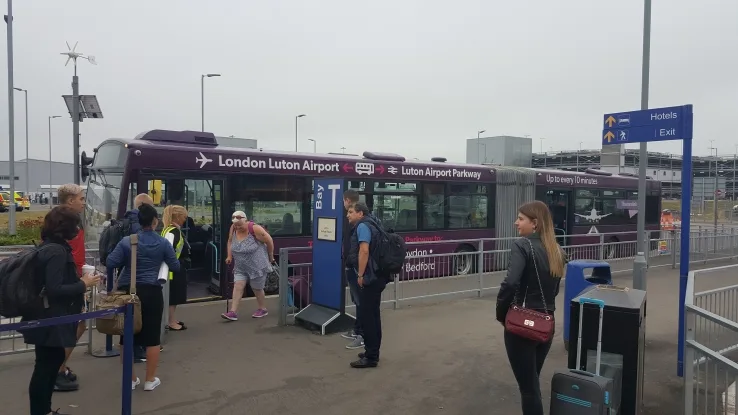
Luton itself feels like a cut-price airport, a feeling that's enhanced because there's a lot of construction work around the bus station. I race in, grab a quick bite of takeaway, and eat it on my walk back to the bus, where I manage to race on board right before departure. Result for time saving!

Provision for luggage: The Javelin has overhead storage plus luggage racks in some carriages. The same applies to Thameslink trains, which also have lots of standing space as the carriages all run together. The transfer bus has luggage racks, though these fill pretty quickly.
Value for money: £16.90 is quite a lot for a journey that only takes 30 minutes, especially as it's not a dedicated train. It would be marginally cheaper outside peak hours, but there's no saving from buying ahead of time.
GATWICK
Luton Airport-Luton Airport Parkway 7:56am-8:02am, cost £2.30
Luton Airport Parkway-Gatwick Airport 8:29am-10:08am, cost £29.80
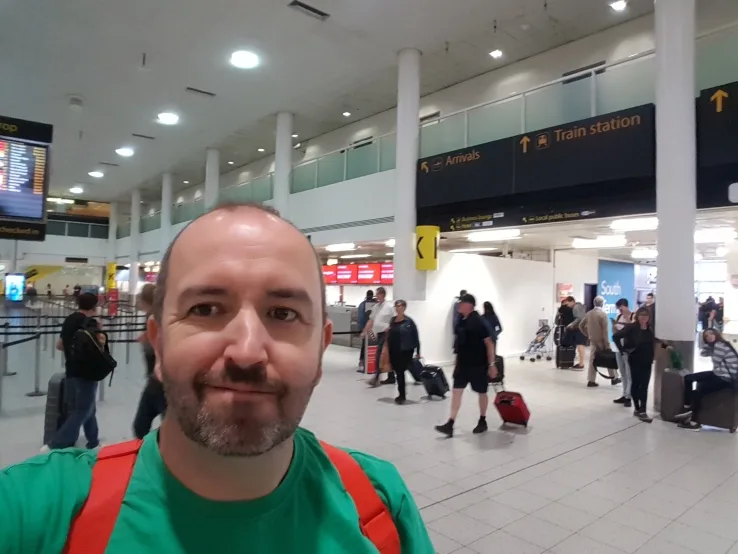
Despite earlier predictions of a heatwave, the sky is ominously cloudy as we return to Luton Airport Parkway. According to the National Rail journey planner, there's a train to Gatwick leaving at 8:15am. This sounds ideal, and I purchase my ticket. But when I check the indicator boards inside the station to find my platform, it turns out the 8:15am has been cancelled, and I'll have to get the 8:30am.
This presents a double-whammy of suckitude. Not only am I now killing time in a drab station where the rain has begun to fall, but the rush hour train I'm boarding will be even more crowded, because everyone from further up the line who wanted to be on my 8:15am service will be crammed onto the following one. I imagine this will be ugly. To steel myself, I buy an absolutely terrible coffee from the station newsstand.
My fears are realised. From Luton back to St Pancras is easily the most crowded journey of the day. Every seat is already taken, and the vestibule is essentially full when we depart. Despite that, we add more people at each of the next three stops, leaving me rammed right up against the door. Apologies for the lack of photographic evidence, but it seemed bad manners to deploy my phone under the circumstances.
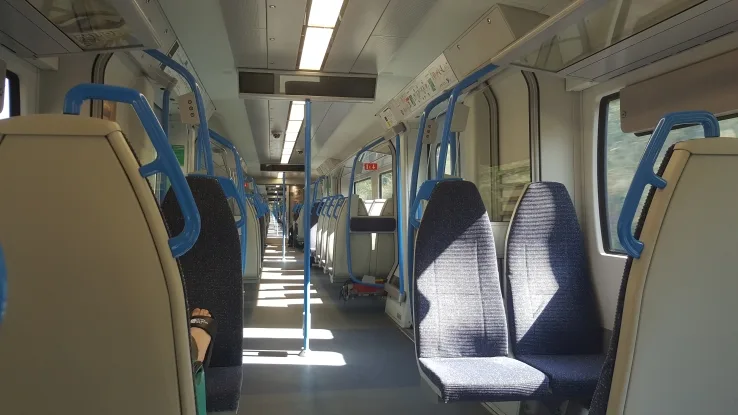
Loads of passengers get out at St Pancras, and by the time we've crossed the Thames and reached London Bridge, I can actually claim a seat again and try and regain sensation in my left arm as we pass through a handful more stations on the way to Gatwick. It's by far the least pleasant trip I'll take today, and to add insult to injury it's also the most expensive.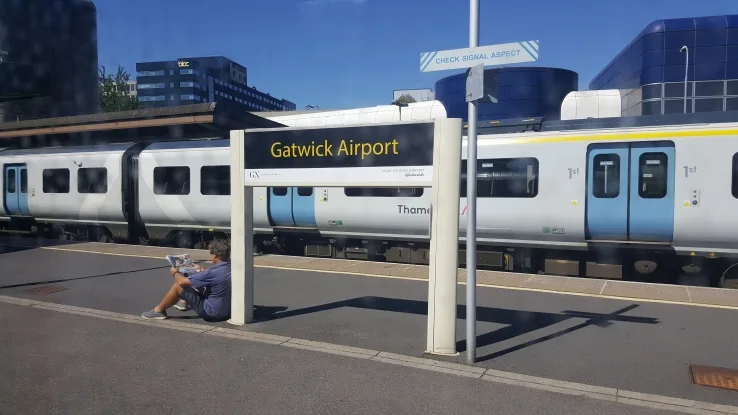
Gatwick itself is a large airport, with a more modern feel than Luton. There's a train to take you between the south and north terminals, but I decide that's beyond my remit. It's selfie time again, and then back onto the platform.
Provision for luggage: Thameslink's luggage racks and standing space don't mean much when the train is entirely full of commuters. Don't try this in rush hour, tourists.
Value for money: At £29.80 it's a very expensive trip, though not many people would need to get from Luton to Gatwick. And at least the price is (roughly) proportionate to the 90-minute journey time, which isn't the case with my next couple of trips . . .
HEATHROW
Gatwick Airport-Victoria 10:19am-10:47am, cost £17.80
Victoria-Paddington 10:54am-11:09am, cost £2.40
Paddington-Heathrow Terminal 5 11:25am-11:46am, cost £14.30
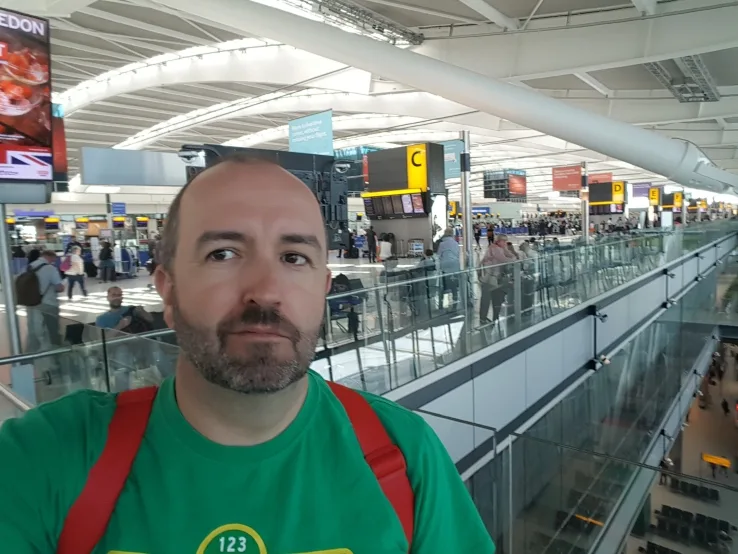
For my return journey, I'm taking the Gatwick Express, the tourist-oriented service for Gatwick passengers. This is supposed to run every 15 minutes, direct between Gatwick and Victoria in Central London. There's a price premium for that convenience: my one-way ticket is £17.80.
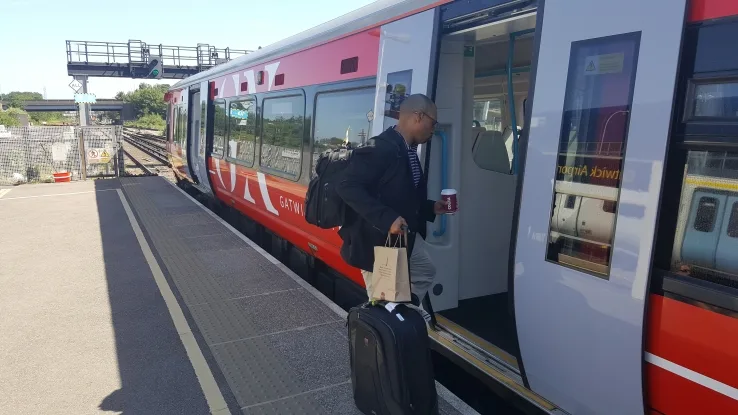
In reality, regularity takes a beating. The 10:19am train I catch back is actually the late-running 10:12am. The previous train also ran late and left at 10:11am, just as I was reaching the platform. That's always been my experience with the Gatwick Express: it runs on time when it feels like it, but it doesn't feel like it terribly often.
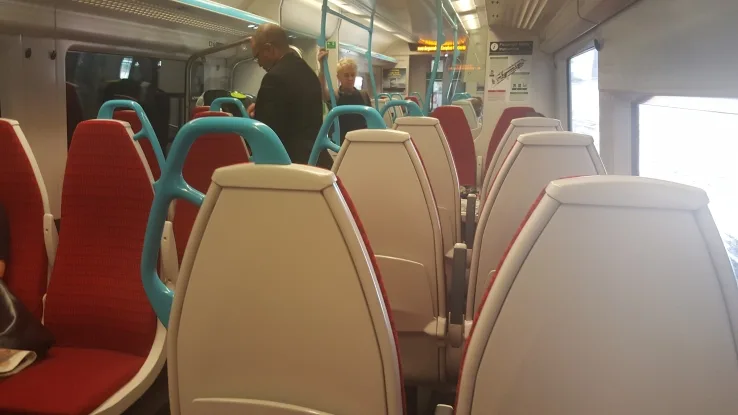
On the upside, it's a full 12-car train, which means there are plenty of seats for those of us (like me) willing to move along the platform. And once on the train, there's a power outlet for me to charge my seriously drained phone.
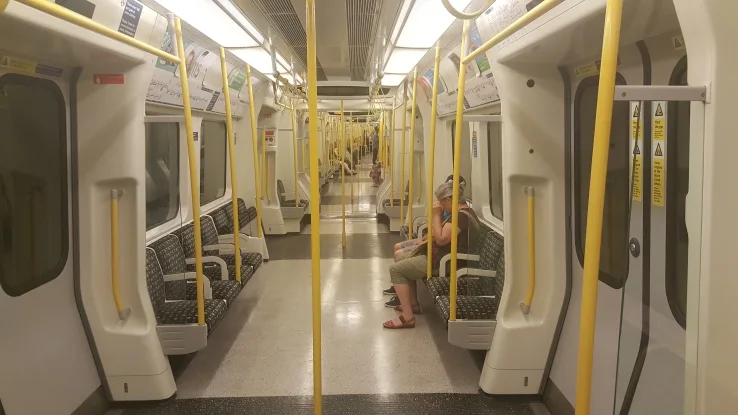
From Victoria, I jump on the Underground Circle Line to get to Paddington, which is where the Heathrow Express departs. It's a fast and cheap journey, and the train is relatively uncrowded. Like Thameslink, all the carriages are walk-through.
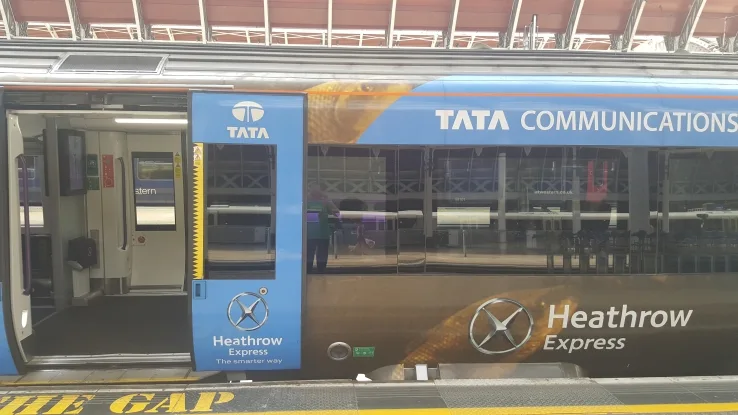
At Paddington, I switch onto the Heathrow Express. This is the fastest option for getting to Heathrow, and I've chosen to use it in both directions to save time. The Underground (on the Piccadilly line) is much cheaper, but a slower journey and often a crowded one.
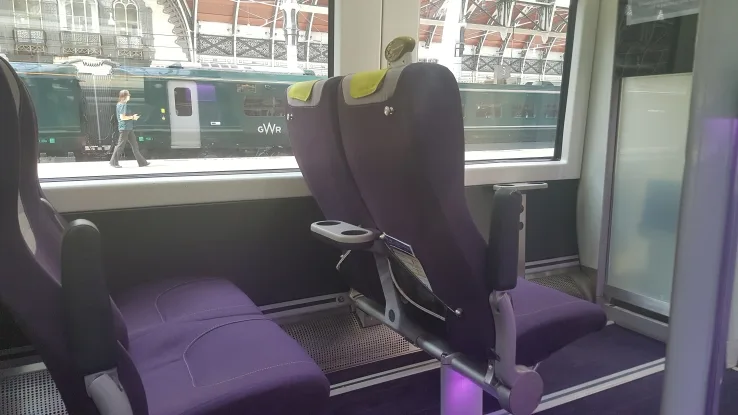
Heathrow Express and Gatwick Express are run by the same company, and the train fit-out is similar, right down to the power outlets. The reliability is better though: it takes off every 15 minutes, and the journey to Terminals 2 and 3 take 15 minutes. Add an extra 5 minutes to get to Terminal 5, and an extra 15 or so for Terminal 4 (since you have to change trains).
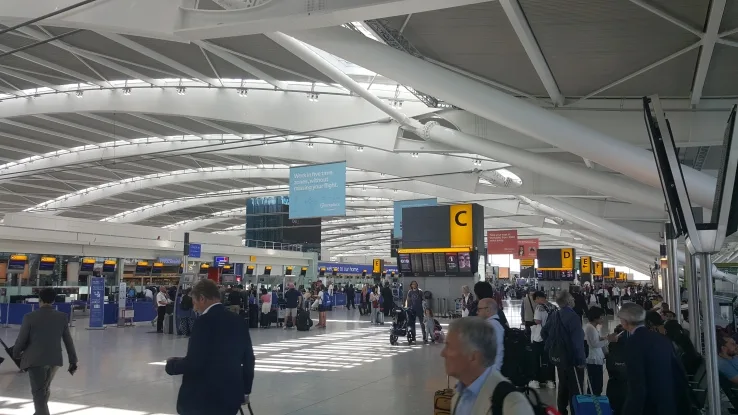
I've headed to Terminal 5, which is the newest (and entirely dedicated to British Airways). This is mostly pragmatism: at Terminals 2 and 3, I'd face a lengthy walk to the terminal itself, while Terminal 5 is literally one lift ride away.
Provision for luggage: As you'd expect, there's plenty of dedicated luggage space near each set of doors on both the Gatwick Express and Heathrow Express.
Value for money: For Gatwick, the Thameslink services are cheaper, but involve more stops and will take you to a different part of Central London. Reliability-wise, there's not much between them right now.
A casual ticket for the Heathrow Express is eye-wateringly expensive: £25 one way for a peak-hour ticket in standard class. A useful trick: if you buy online more than 90 days in advance, you can score the tickets for a quarter of the regular price, which makes it close in price to the tube. (I didn't get in quite that far ahead, but did pay less than the walk-up price.)
STANSTED
Heathrow Terminal 5-Paddington 11:57am-12:19pm, cost £14.30
Lancaster Gate-Liverpool Street 12:40pm-12:57pm, cost £2.40
Liverpool Street-Stansted Airport 13:10pm-14:26pm, cost £17.00
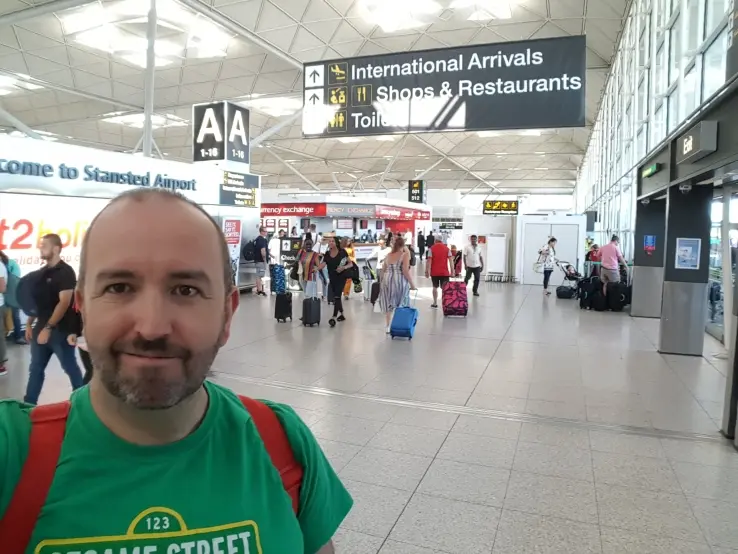
Given that it's barely midday and I've only got one airport to go, it turns out I could have taken the Underground back into the city. But I'd already paid for my Heathrow Express ticket, so I head back on the same train I arrived on.
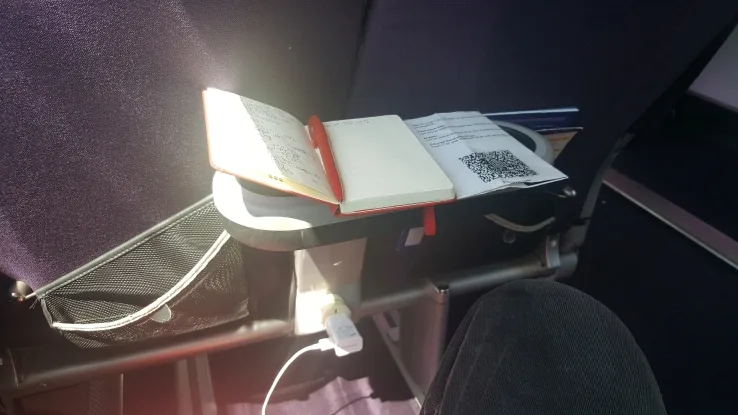
To catch the Stansted Express, I first need to get to Liverpool Street. Rather than repeating myself and jumping on the Circle Line again, I take the brief 10-minute stroll from Paddington to Lancaster Gate on the Central Line. That also gives me a chance to eat a sandwich picked up at a local supermarket.
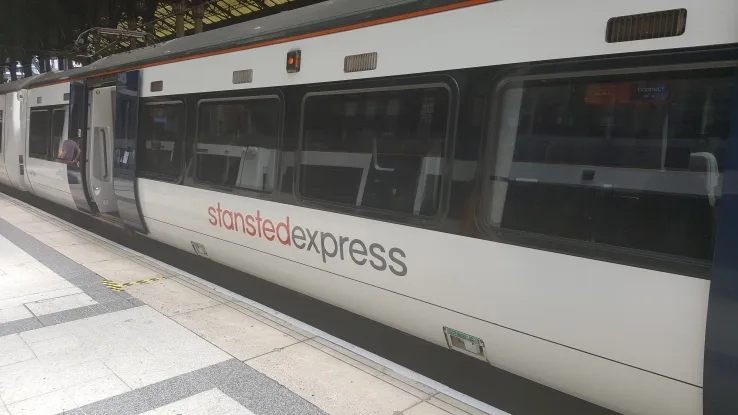
Like the other Express lines, the Stansted service offers at-seat power and Wi-Fi, though the train itself is a little older and rattier than its Heathrow and Gatwick siblings. It's also a longer journey (at around 47 minutes in theory) and makes two interim stops, at Tottenham Hale and Bishop's Stortford. The first of these passes without incident. The second turns out to be an extended visit.
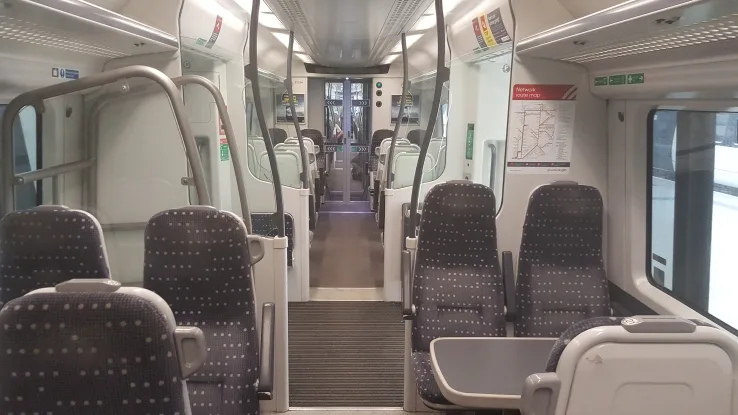
We pull into Bishop's Stortford (reputedly this stop exists to serve airline crews staying in nearby hotels) and wait. Five minutes later, nothing's happened. I'm guessing that this might be because we're waiting for a platform to be vacated at Stansted, but then the guard announces that one of the train doors is broken, and it can't be fixed. So we'll all have to get off the train, and then get on board the next one that comes in.
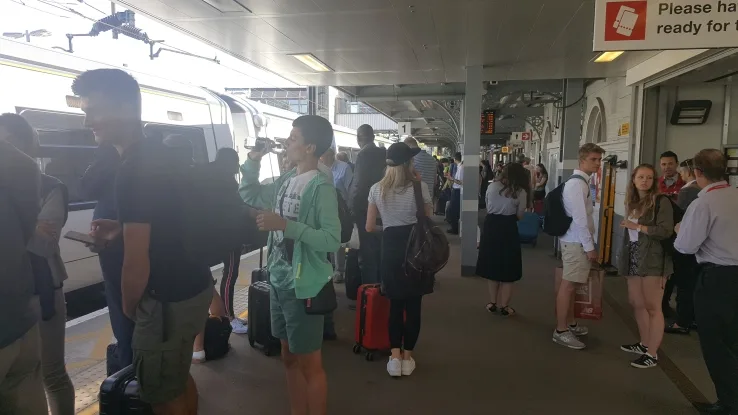
Some of my fellow passengers are very stressed by this news, presumably because they're already running late for their flights. I'm more concerned that the next train will be packed at Thameslink-like levels. When the next train does pull in, it's fairly full, but the journey is mercifully short, and we finally get to Stansted.
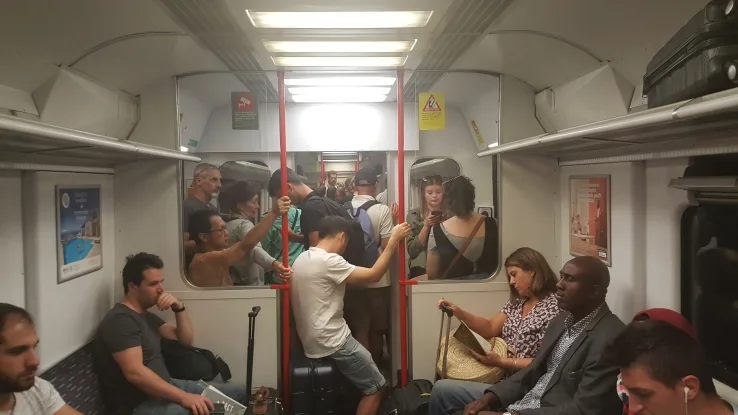
Stansted is best described as a giant shed, and it's absolutely milling with people. But after nine hours, I've completed my mission. Time to head to my hotel and collapse (though that turns out to also involve an unexpected hassle).
Provision for luggage: While there are luggage racks near each door on the Stansted Express, my service was near-full, which meant a certain amount of grumbling and complaining from other passengers. I felt suitably smug with my carry-on bag.
Value for money: A one-way ticket on the Stansted Express costs £17, which is a similar rate to its Express siblings, but arguably better value as the journey is longer. As with the other services, if you book a return which isn't on the same day, you'll pay less.
What I learned
The first key lesson: trains are a super-convenient way to get to the airport in London. Whether or not they are particularly cheap depends on which airport you're travelling to. Let's remind ourselves what each leg of the journey cost:
| Journey | Type | Cost |
|---|---|---|
| Southend Airport-Stratford | c2c | £14.10 |
| Stratford-London City Airport | Underground/DLR | £1.50 |
| London City Airport-Stratford International | DLR | £1.50 |
| Stratford International-St Pancras | Javelin | £5.60 |
| St Pancras-Luton Airport Parkway | Thameslink | £16.90 |
| Luton Airport-Luton Airport Parkway | Bus | £2.30 |
| Luton Airport Parkway-Gatwick Airport | Thameslink | £29.80 |
| Gatwick Airport-Victoria | Gatwick Express | £17.80 |
| Victoria-Paddington | Underground | £2.40 |
| Paddington-Heathrow Terminal 5 | Heathrow Express | £14.30 |
| Heathrow Terminal 5-Paddington | Heathrow Express | £14.30 |
| Lancaster Gate-Liverpool Street | Underground | £2.40 |
| Liverpool Street-Stansted Airport | Stansted Express | £17.00 |
| TOTAL | £139.90 |
Typically, you'll pay around £15 to make a journey to one of London's airports from the city centre. By far the cheapest option is London City, with a super-frequent DLR service that's ridiculously reasonably priced. The most expensive on my list is Luton to Gatwick, but that's not a journey many people would make.
For regular passengers, the Heathrow Express is the biggest price trap. My top tip for Aussies: take advantage of the massive discount if you book online more than 90 days in advance.
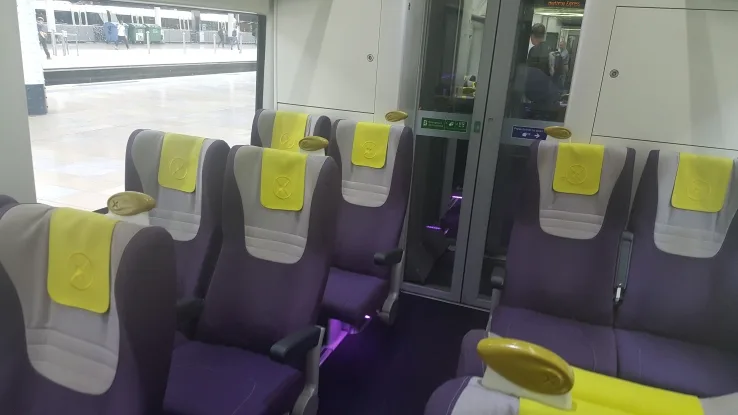
Are there cheaper non-train alternatives for any of these journeys? Taking a cab or Uber would always be much pricier. There are coaches to Heathrow, Gatwick, Stansted and Luton which are generally a little cheaper, but slower, less predictable and (frankly) much more hassle.
The second key lesson: travel as light as you can. While the Express trains all include dedicated luggage space, it can fill up. On the Underground in peak hour, you'll struggle to ever get on a train with a full-sized suitcase.
Trainfinder returns to its regular Australian plans in July, checking out the only non-capital-city network in Australian: the branches that make up the Hunter Line. Catch you then!
Angus Kidman's Findings column looks at new developments and research that help you save money, make wise decisions and enjoy your life more. It appears regularly on finder.com.au.
Pictures: Angus Kidman
Ask a question
